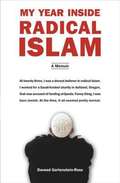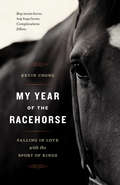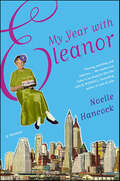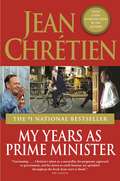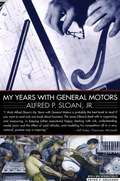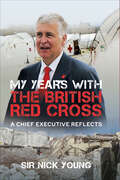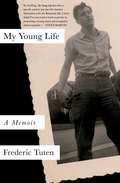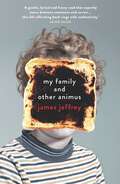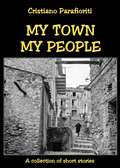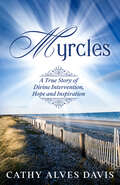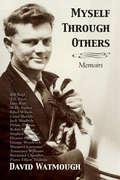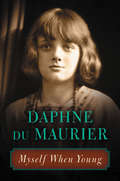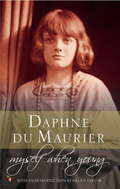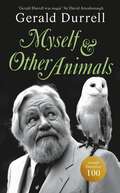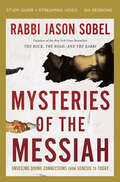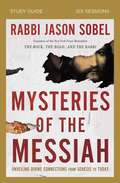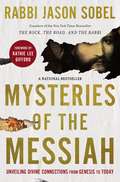- Table View
- List View
My Year Before the Mast
by Annette Brock DavisIn 1933, a young Canadian woman rejected the expectations of society and her upper-class family and became a crew member aboard one of the last great four-masted sailing vessels that still plied the ocean.It was not an easy task. Young Annette had to fight pressures from her family, rejection from schools of navigation, and doubts from ship owners. When she finally found a berth as an apprentice seaman, she faced hostility from officers and crew, who grumbled that she should be home "raising babies." In the end, however, Annette won their respect, taking in sails, standing night watches, hauling and coiling ropes all the tasks the men were doing, with no concession to a girl’s lesser strength.My Year Before the Mast tells the story of Annette Brock Davis’s life on the sea as the first female crew member of a commercial sailing line. Her courage and determination to break into a closed male world are central to this book, but we cannot ignore the fact that, while this is a book about a woman’s struggle, it is also a book about the sea. Davis brings to life an era long gone, and introduces an incredible cast of characters the crew, officers, and passengers, each with his own foibles, humour, generosity, and flashes of meanness. But through it all, Annette emerges as the most remarkable character of them all.
My Year Inside Radical Islam
by Gartenstein-Ross DaveedMy Year Inside Radical Islamis a memoir of first a spiritual and then a political seduction. Raised in liberal Ashland, Oregon, by parents who were Jewish by birth but dismissive of strict dogma, Daveed Gartenstein-Ross yearned for a religion that would suit all his ideals. At college in the late nineties he met a charismatic Muslim student who grounded his political activism with thoughtful religious conviction. Gartenstein-Ross reflects on his experience of converting to Islam-a process that began with a desire to connect with both a religious community and a spiritual practice, and eventually led him to sympathize with the most extreme interpretations of the faith, with the most radical political implications. In the year following graduation, Gartenstein-Ross went to work for the al-Haramain Islamic Foundation, a charity dedicated to fostering Wahhabism, Saudi Arabia's austere form of Islam-a theological inspiration for many terrorist groups, including al-Qaeda. Shortly after he left al-Haramain-when his own fan-aticism had waned-the foundation was charged by the U. S. government as being a source of funds for terrorist organizations. Gartenstein-Ross, by this time a lawyer at a prominent firm, volunteered to be questioned by the FBI. They already knew who he was. The story of how a good faith can be distorted and a decent soul can be seduced away from its principles, My Year Inside Radical Islamprovides a rare glimpse into the personal interface between religion and politics.
My Year Inside Radical Islam: A Memoir
by Daveed Gartenstein-RossMy Year Inside Radical Islam is a memoir of first a spiritual and then a political seduction. Raised in liberal Ashland, Oregon, by parents who were Jewish by birth but dismissive of strict dogma, Daveed Gartenstein-Ross converted to Islam in college-a process that began with a desire to connect with both a religious community and a spiritual practice, and eventually led him to sympathize with the most extreme interpretations of the faith with the most radical political implications. In the year following graduation, Gartenstein-Ross went to work for the Al Haramain Islamic Foundation, a charity dedicated to fostering Wahhabism, Saudi Arabia's austere form of Islam-a theological inspiration for many terrorist groups, including al-Qaeda. Shortly after he left Al Haramain-when his own fanaticism had waned-the foundation was charged by the U.S. government for a money-laundering scheme that was seemingly designed to finance terrorist organizations. Gartenstein-Ross, by this time a lawyer at a prominent firm, volunteered for questioning by the FBI. They already knew who he was. The story of how a good faith can be distorted and a decent soul can be seduced away from his principles, My Year Inside Radical Islam provides a rare glimpse into the personal interface between religion and politics.
My Year Off
by Robert Mccrum'When I was just forty-two I suffered a severe stroke. Paralysed on my left side and unable to walk, I was confined to hospital for three months, then spent about a year recovering, slowly getting myself back into the world. When I was seriously ill in hospital, I longed to read a book that would tell me that I might expect in convalescence and also give me something to think about. . . ' 'Not only a riveting account of his sudden illness, but of love being put under a real test: a heart-warming triumph' Kazuo Ishiguro, Sunday Times Books of the Year 'With its lucid heartfelt prose, My Year Offgives voice to the millions of people who suffer strokes . . . More importantly, this book is a testament to the parallel trials and courage of the family members of stroke victims' New York Times Book Review 'Few of us can write in perfect health with the wit, skill, honesty and compassion that McCrum manages following a stroke' Professor Anthony Clare
My Year Without Meat
by Richard CornishWhen food writer Richard Cornish was so overcome by the aroma of the roast leg of lamb he had buckled into the passenger seat next to him that he pulled over to the side of the road and tore it apart with his bare hands, he knew he had a problem. He began to examine what it means to eat meat by becoming vegetarian for a year.My Year Without Meat is a surprising and bittersweet journey that changed Richard's body, his values and how he cooks. It's a meditation on ethical meat, an ode to vegetables and a cautionary tale about our relationship to food—as told by a self-confessed meat lover.Peppered with funny anecdotes, eye-opening facts and conversations with some of Australia's best local producers, farmers and top chefs, My Year Without Meat thoughtfully explores how and why Australians consume food the way we do.It will make you rethink the contents of your supermarket trolley, how you prepare your evening meal and where your food comes from.
My Year of Running Dangerously
by Tom ForemanCNN correspondent Tom Foreman's remarkable journey from half-hearted couch potato to ultra-marathon runner, with four half-marathons, three marathons, and 2,000 miles of training in between; a poignant and warm-hearted tale of parenting, overcoming the challenges of age, and quiet triumph.As a journalist whose career spans three decades, CNN correspondent Tom Foreman has reported from the heart of war zones, riots, and natural disasters. He has interviewed serial killers and been in the line of fire. But the most terrifying moment of his life didn't occur on the job--it occurred at home, when his 18-year old daughter asked, "How would you feel about running a marathon with me?" At the time, Foreman was approaching 51 years old, and his last marathon was almost 30 years behind him. The race was just sixteen weeks away, but Foreman reluctantly agreed. Training with his daughter, who had just started college, would be a great bonding experience, albeit a long and painful one. My Year of Running Dangerously is Foreman's journey through four half-marathons, three marathons, and one 55-mile race. What started as an innocent request from his daughter quickly turned into a rekindled passion for long-distance running--for the training, the camaraderie, the defeats, and the victories. Told with honesty and humor, Foreman's account captures the universal fears of aging and failure alongside the hard-won moments of triumph, tenacity, and going further than you ever thought possible.From the Hardcover edition.
My Year of the Racehorse
by Kevin ChongKevin Chong has grand plans. He draws up a to-do list of major milestones that will give him the life he always wanted-and the life that will inspire awe and envy in his friends. Things like settling down and starting a family; learning a foreign language; getting a tattoo. But these grand plans go out the window when Chong makes an unconventional decision: he's going to buy a racehorse. Not the whole thing-he'll become part-owner of the horse. Just don't ask him which part.Thus Chong meets Blackie, the racehorse that will win his heart, even if she doesn't always win on the track. He meets Randi, the cantankerous and foul-mouthed horse trainer with a heart of gold. He meets an assorted array of characters who work, live and drink at the track-and, one by one, the items on his to-do list are crossed out and replaced with horse-related ambitions. His goals are a bit more humble (cussing like a track worker replaces learning a foreign language), but his life has gained new meaning.The story is infused with the noise, excitement and faded glamour of the horse-racing world. It is strewn with fascinating tidbits about the history and tradition of this
My Year with Eleanor: A Memoir
by Noelle Hancock“I honestly loved this book.”—Jim Norton, New York Times bestselling author of I Hate Your Guts“Eleanor taught Noelle that, first and foremost, Courage Takes Practice. Her yearlong quest to face her terrors, great and small, is moving, enriching, and hilarious—we readers are lucky to be along for the ride.”—Julie Powell, bestselling author of Julie & JuliaIn the tradition of My Year of Living Biblically and Eat Pray Love comes My Year with Eleanor, Noelle Hancock’s hilarious tale of her decision to heed the advice of First Lady Eleanor Roosevelt and do one thing a day that scares her in the year before her 30th birthday. Fans of Sloane Crosley and Chelsea Handler will absolutely adore Hancock’s charming and outrageous chronicle of her courageous endeavor and delight in her poignant and inspiring personal growth.
My Years as Prime Minister
by Jean ChretienMy Years as Prime Minister is Jean Chrétien's own story, told with insight and humour, of his ten years at 24 Sussex Drive as Canada's twentieth prime minister.By the time he left office, Jean Chrétien had been in politics for forty years - and his experience is evident on every page of his important, engaging memoir. Chrétien loves to tell a good tale - and he does so here in the same honest, plain-spoken style of Straight from the Heart, his earlier bestselling account of his years as a Cabinet minister. He gives us a self-portrait of a working prime minister - the passionate Canadian renowned for finishing every speech with Vive le Canada!Chrétien knows how government works, and his political instincts are sharp. Through the decade 1993 to 2003 we watch as he wins three majority elections as leader of the Liberal Party of Canada. Finding the country in a dreadful state, dangerously in debt and bitterly divided, he describes how his government wiped out the deficit in just four years, helped to defeat the separatists in the cliffhanger Quebec referendum, passed the Clarity Act, and set out to fulfill the economic and social promises his party made in its famous Red Books. He reveals how and why he kept the country out of the war in Iraq - a defining moment for many Canadians; led Team Canada on whirlwind trade missions around the world; and participated in a host of major international summits.Along with his astute comments on politics and government, he gives candid portraits of a broad cast of characters. Over a beer, Tony Blair confides his hesitation about taking Britain into the Iraq War; in the corridors of the United Nations, Bill Clinton offers to speak to Quebecers on behalf of Canadian unity; while at home, Chrétien reveals the events leading up to the departure of his finance minister, Paul Martin. He recounts the dramatic night in which his quick-thinking wife, Aline, saved him from an assassination attempt at 24 Sussex Drive; and, with lively humour, he describes how he and Clinton successfully escaped from their own bodyguards - to the consternation of all.Even in the highest office in the land, Jean Chrétien never lost his connection with ordinary Canadians. He is as warm and funny in his recollections as in person, at once combative and cool-headed, a man full of vitality and charm. Above all, from start to finish, his love for his country and his passion to keep it united run clear and deep.From the Hardcover edition.
My Years with Corrie
by Ellen de Kroon-StampsFor nearly ten years, Ellen de Kroon worked and traveled as companion to the author and evangelist Corrie ten Boom. This book recounts Ellen's work, her travels to various countries, her ministry alongside Corrie ten Boom, and the lessons in trusting God she learned along the way.
My Years with General Motors
by Alfred P. Sloan Jr. John Mcdonald Catharine StevensWith his involvement in General Motors spanning forty-five years, the author gives an account of the progress of General Motors.
My Years with the British Red Cross: A Chief Executive Reflects
by Nicholas YoungSir Nick Young’s memoir is a fascinating and candid account of his thirteen years as chief executive of the British Red Cross (2001-2014). During this critical period he led the organization's response to the financial crisis, the Iraq War, the Asian Tsunami, the London bombings, a kidnapping, the fighting in Syria, media challenges, and numerous earthquakes, floods and other disasters. The author shares the strains and moments of fulfillment, relief and humor, as he played a key role in the response to some of the 21st Century’s most dramatic and dangerous events. His book paints a vivid yet modest picture of what is involved running one of the world’s best-known disaster response organizations, reacting to catastrophes, both man-made and natural, and saving the lives and livelihoods of those caught up in global disasters, conflicts and health emergencies. It is rare for charity leaders to reveal their insights in this way and, at the same time, paint such a vivid picture of life at the top of a large voluntary organization. The result is a compelling read, particularly for those interested in international affairs, the way charities work, and what makes them different from other types of world class organizations.
My Young Life: A Memoir
by Frederic TutenNovelist, essayist, and critic Frederic Tuten recalls his personal and artistic coming-of-age in 1950s New York, a defining period that would set him on the course to becoming a writer.Born in the Bronx to a Sicilian mother and Southern father, Frederic Tuten always dreamed of being an artist. Determined to trade his neighborhood streets for the romantic avenues of Paris, he learned to paint and draw, falling in love with the process of putting a brush to canvas, and the feeling it gave him. At fifteen, he decided to leave high school and pursue the bohemian life he’d read about in books, a life of salons and cafes and “worldly women” from whom he could learn and grow. But, before he could, he would receive an extraordinary education, right in his own backyard. My Young Life is the story of those early formative years where, in the halls of Christopher Columbus High School, and later the City College of New York, Frederic would discover the kind of life he wanted to lead. As Tuten travels downtown for classes at the Art Students League, spends afternoons reading in Union Square, and discovers the vibrant scenes of downtown galleries and Lower East Side bars, he finds himself a member of a new community of artists, gathering friends, influences—and many girlfriends—along the way. Frederic Tuten has had a remarkable life, writing books, traveling around the world, acting in and creating films, and even conducting summer workshops with Paul Bowles in Tangiers. Spanning two decades and bringing us from his family’s kitchen table in the Bronx and the cafes of Greenwich Village and back again, My Young Life is an intimate and enchanting portrait of an artist’s coming-of-age, set against one of the most exciting creative periods of our time.
My family and other animus
by James JeffreyFor the young James Jeffrey, the day his parents split was like the splitting of the atom. Life took on a seismic instability filled with madness and strain and vendetta and daftness and acts of love, both beautiful and misguided. Yet, what could have been a calamitous upbringing turned instead into an education. For better or worse, his family handed out lessons that would guide him through life, into marriage, and eventually parenthood. My Family and Other Animus is an ode to his family.
My town, my people
by Cristiano Parafioriti Louise RabourGalati Mamertino is a small mountain town nestled in the Nebrodi national park, oozing with history from its very walls: and a small part of that history will come to life in "my country, my people". Through twenty short stories, rich with vivid characters, intoxicating smells and ancient flavors, the author paints a picture of his youth, cleverly moving between fact and fiction. Reading these pages we hear the fragile voice of the South, a voice suffocated by the numbness born of resignation and sadness, but which at the same time speaks of a love of times gone by, of a poor but sanguine land, exhausted and wounded from the plague of poverty, injustice and emigration but still very much alive in the minds and memories of those who left. And those memories lodge in the mind and settle in the heart as an emotional reservoir overflowing with words, thoughts and images of a moment, a day, an era once lived and still able to touch us deeply.
Myrcles: A True Story of Divine Intervention, Hope and Inspiration
by Cathy Alves DavisA breast cancer survivor shares her journey of faith and hope to inspire others who find themselves lost, afraid, and unsure of their path in life. Everyone at one time or another is seeking a miracle, something to believe in, something concrete. Cathy Alves Davis found herself in just such a place. She was in her forties when she was diagnosed with Aggressive Stage III Breast Cancer. Given little hope of surviving, she knew whom to turn to in the tough times. Actually, Cathy had been doing it all her life. So, she turned to the only one that could help her, God.Without even knowing it at the time Cathy was about to step into her Divine Destiny. A destiny that would propel her into a world of giving hope and inspiration to countless others just as God planned. Myrcles is a story of faith, family, betrayal, love, adversity, hope, inspiration and Miracles. You won’t want to miss what the Gift of Faith did for Cathy’s life. And how adversity gave her a whole new beginning.“A poignant, uplifting and inspiring story, courtesy of an incredible woman who will share her wisdom, her journey with God and her faith.” —Red Headed Book Lover
Myself Through Others: Memoirs
by David WatmoughBorn in London, England, of Cornish stock, David Watmough arrived on Canada’s West Coast in 1961 and quickly became a fixture on the Canadian cultural scene. Now in his eighth decade, Watmough, often spoken of as this country’s senior gay male fiction writer, has decided to commit his memories to paper. Given the autobiographical nature of his fiction, the prolific raconteur has opted for a novel approach to his own life by telling his story through his encounters with the numerous people he has met, befriended, loved, and jousted with over the years. And what a parade of personalities it is! Watmough serves up incisive, trenchant, often witty profiles of writers W.H. Auden, T.S. Eliot, Stephen Spender, Raymond Chandler, Tennessee Williams, Carol Shields, Margaret Laurence, Jane Rule, and Wallace Stegner; artists Bill Reid and Jack Shadbolt; politicians and celebrities Pierre Trudeau, Clement Atlee, and Eleanor Roosevelt; Hollywood actress Jean Arthur; and a host of others.
Myself When Young
by Daphne Du Maurier"An intimate view of a creative personality...as richly evocative as any of her novels." --Los Angeles TimesBoth in her novels and her memoirs, Daphne du Maurier revealed an ardent desire to explore her family's history. In Myself When Young, based on diaries she kept between 1920 and 1932, du Maurier probes her own past, beginning with her earliest memories and encompassing the publication of her first book and her marriage. Often painfully honest, she recounts her difficult relationship with her father, her education in Paris, her early love affairs, her antipathy towards London life, and her desperate ambition to succeed as a writer. The resulting self-portrait is of a complex, utterly captivating young woman.
Myself When Young: The Shaping of a Writer (Virago Modern Classics #119)
by Daphne Du MaurierBoth her novels and her non-fiction reveal Daphne du Maurier's overwhelming desire to explore her family's history. In Myself When Young, based on diaries that she kept from 1920-1932, the most famous du Maurier probes her own past, beginning with her earliest memories and encompassing the publication of her first book and her subsequent marriage.Here, the writer is open and sometimes painfully honest about the difficult relationship with her father; her education in Paris; early love affairs; her antipathy towards London life and the theatre; her intense love for Cornwall and her desperate ambition to succeed as a writer. The resulting portrait is of a captivating and complex character.A delightful book, full of amusing and charming stories, pinpointing the literary influences and the first stirrings of books to be written in later years, and with a happy and romantic ending - THE TIMES
Myself When Young: The Shaping of a Writer (Vmc Ser. #658)
by Daphne Du MaurierBoth her novels and her non-fiction reveal Daphne du Maurier's overwhelming desire to explore her family's history.In Myself When Young, based on diaries that she kept from 1920-1932, the most famous du Maurier probes her own past, beginning with her earliest memories and encompassing the publication of her first book and her subsequent marriage.Here, the writer is open and sometimes painfully honest about the difficult relationship with her father; her education in Paris; early love affairs; her antipathy towards London life and the theatre; her intense love for Cornwall and her desperate ambition to succeed as a writer. The resulting portrait is of a captivating and complex character.A delightful book, full of amusing and charming stories, pinpointing the literary influences and the first stirrings of books to be written in later years, and with a happy and romantic ending - THE TIMES
Myself and Other Animals: A posthumous work from the beloved conservationist to celebrate the centenary of his birth
by Gerald DurrellA posthumous work from the beloved conservationist and naturalist Gerald Durrell, to celebrate the centenary of his birth, with a new foreword by HRH Princess Anne.‘Gerald Durrell was magic’ SIR DAVID ATTENBOROUGH ‘A wise, genial and world-encompassing book’ SUNDAY TIMES ‘Fills important gaps in the biographical narrative . . . Truly, there is magic here’ GUARDIAN Myself and Other Animals is a new book mosaicked from unpublished autobiographies, uncollected pieces and previously published extracts from Durrell’s work and archives. The result is an extraordinary journey through Durrell’s life in his own words, edited and introduced by his widow Lee Durrell.Drawing on a memoir that Durrell started writing before he became too ill to continue it, and an unfinished book from a trip to Australia in 1969 to the Great Barrier Reef, Northern Territory and Queensland, here is the unvarnished story of Durrell’s life, from touching family tributes to golden bats and pink pigeons.Moving from India to England and then to the always sun-lit Corfu, told with dry wit and insight into our fellow animals, here is the vivid finale of one of Britain’s most beloved conservationists and prose stylists.'Funny and readable and hugely charming' i ‘One of the finest and most lyrical nature writers in English’ OBSERVER'A moving tribute to Gerald's endeavours and achievements as a conservationist' SPECTATOR
Myself and the World: A Biography of William Faulkner
by Robert W. HamblinWilliam Faulkner (1897–1962) once said of his novels and stories, “I am telling the same story over and over, which is myself and the world.” This biography provides an overview of the life and career of the famous author, demonstrating the interrelationships of that life, centered in Oxford, Mississippi, with the characters and events of his fictional world. The book begins with a chapter on Faulkner's most famous ancestor, W. C. Falkner, “the Old Colonel,” who greatly influenced both the content and the form of Faulkner's fiction. Robert W. Hamblin then proceeds to examine the highlights of Faulkner's biography, from his childhood to his youthful days as a fledgling poet, through his time in New Orleans, the creation of Yoknapatawpha, the years of struggle and his season of prolific genius, and through his time in Hollywood and his winning of the Nobel Prize. The book concludes with a description of his last years as a revered author, cultural ambassador, and university writer-in-residence. In his Nobel Prize acceptance speech, Faulkner spoke of “the agony and sweat of the human spirit” that goes into artistic creation. For Faulkner, that struggle was especially acute. Poor and neglected for much of his life, suffering from chronic depression and alcoholism, and unhappy in his personal life, Faulkner overcame tremendous obstacles to achieve literary success. One of the major themes of his novels and stories remains endurance, and his biography exhibits that quality in abundance. Faulkner the man endured and ultimately prevailed.
Mysteries of the Messiah Bible Study Guide plus Streaming Video: Unveiling Divine Connections from Genesis to Today
by Rabbi Jason SobelDon't settle for half of the story! Discover the Jewish roots to the Christian faith.This study guide has everything you need for a full Bible study experience, including:The study guide itself—with discussion and reflection questions, Bible exploration, video notes, and a leader's guide.An individual access code to stream all six video sessions online (you don't need to buy a DVD!).Every page of the Old Testament reveals divine mysteries about Jesus, the Messiah. Only by understanding the Old Testament can Christians understand the complete picture of who God is, how he relates to us, and what he is doing today in the world.In this six-session video Bible study (video streaming included), walk with Messianic Rabbi Jason Sobel as he shows you how the Bible fits together as a whole to offer one complete picture of Jesus. In the Mysteries of the Messiah Bible study Rabbi Jason Sobel helps us to...Understand the Jewish roots of our faith and begin to see Jesus' life and ministry from a different perspective.See the signs everywhere in the Old Testament that point to the coming of the Messiah in the New Testament.Continue to dig and find mysteries and new discoveries hidden in God's Word.Sessions and video run times:Finding Jesus in the Story of Creation (22:00)Finding Jesus in the Story of the Patriarchs (22:00)Finding Jesus in the Story of Joseph and Judah (22:30)Finding Jesus in the Story of Moses (22:30)Finding Jesus in the Story of Ruth and Boaz (22:00)Finding Jesus in the Story of David (22:30)Watch on any device!Streaming video access code included. Access code subject to expiration after 12/31/2027. Code may be redeemed only by the recipient of this package. Code may not be transferred or sold separately from this package. Internet connection required. Void where prohibited, taxed, or restricted by law. Additional offer details inside.
Mysteries of the Messiah Study Guide: Unveiling Divine Connections from Genesis to Today
by Rabbi Jason SobelIn this six-session video Bible study (DVD/digital downloads sold separately), Rabbi Jason Sobel uncovers connections between the Old Testament and New Testament that are vital in giving us a complete picture of God's plan for sending Jesus into the world as the Messiah. In the Gospel of Luke, we read how Jesus revealed this connection to two disciples on the road to Emmaus. They listened as Jesus explained, "beginning with Moses and the Prophets . . . what was said in all the Scriptures concerning himself," and later asked themselves, "Were not our hearts burning within us while he talked with us on the road and opened the Scriptures to us?" (Luke 24:27,32).Too many of us today are likewise missing this connection. We are settling for just the New Testament or the Old Testament and not understanding how the Bible fits together as a whole to offer one complete picture of Jesus. Both the Old and New are God's priceless possessions . . . and neither one is more or less valuable than the other. However, together their value increases dramatically! For both are needed in order for us to experience our full inheritance in God's kingdom and His beloved children.As Rabbi Jason unlocks these connections, participants will come to understand:How the foundation of the Bible (The Torah) fits with the rest of ScriptureHow the Torah answers the question of "who is the promised seed?"How all of the Bible works to give a picture of the promise of MessiahWhat implications this has for their lives as the Old and New Testaments come togetherThe Mysteries of the Messiah will show participants that God's Word—written by many people over thousands of years—is not a random selection of people and stories but of intricate connections. Rabbi Jason will connects the dots, helping them see with clarity and "high definition" what God intended.Designed for use with the Mysteries of the Messiah Video Study (sold separately).
Mysteries of the Messiah: Unveiling Divine Connections from Genesis to Today
by Rabbi Jason SobelHighlighting connections that have been hidden from non-Jewish eyes, Rabbi Jason Sobel pulls back the curtain to shed God&’s light on the holy scriptures.Most people do not understand how the Bible fits together—even people of faith. Too many Christians accept half an inheritance in that they are content to embrace merely the New Testament. On the flip side, Jews often experience this by embracing only the Old Testament. But God has an intricate plan and purpose for both.In Mysteries of the Messiah, Rabbi Jason Sobel, raised in a Jewish home in New Jersey but now a follower of Yeshua, pulls back the curtain to show the many connections in Scripture hidden in plain sight. Known for his emphatic declaration &“but there&’s more!&” he guides readers from the story of creation through Revelation to see the passion and purpose of the Messiah, the Torah, and several of the patriarchs and prophets.God&’s Word, written by many people over thousands of years, is not a random selection of people and stories, but they have intricate connections. Rabbi Jason connects the dots for readers, helping them see with clarity what God intended.

